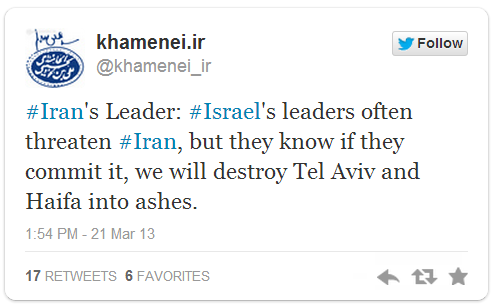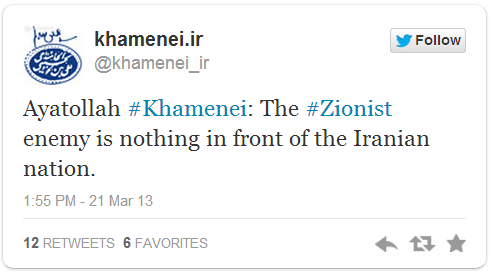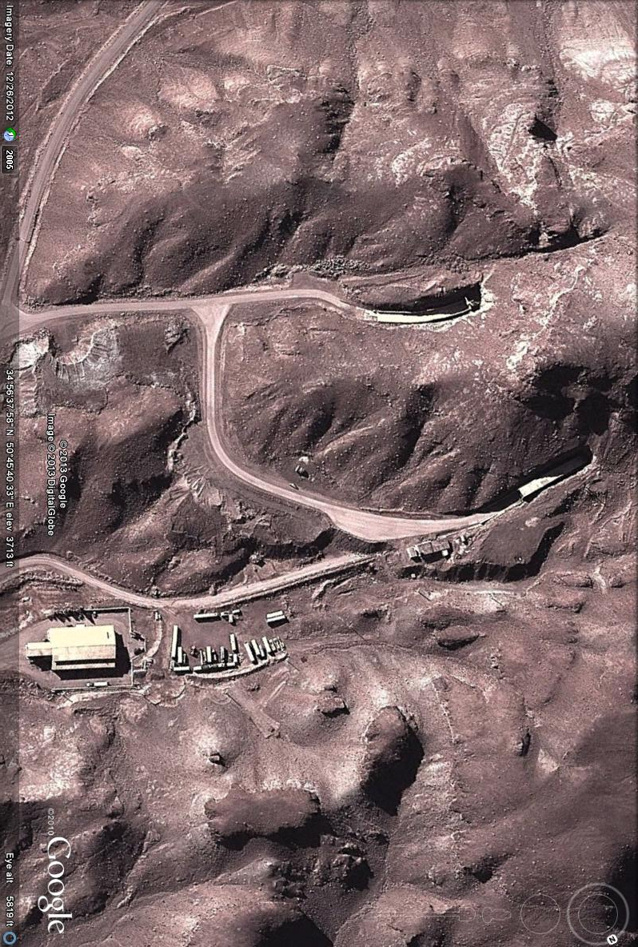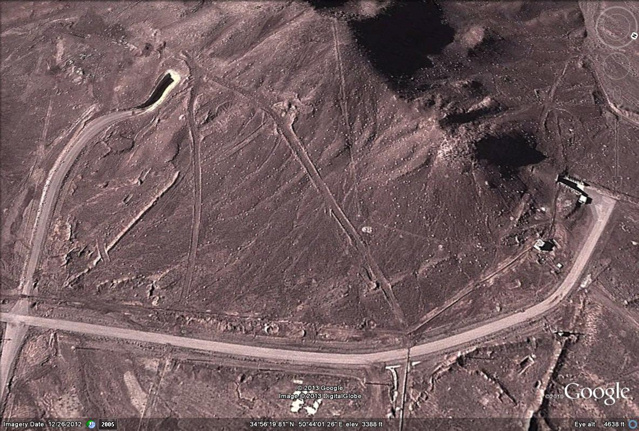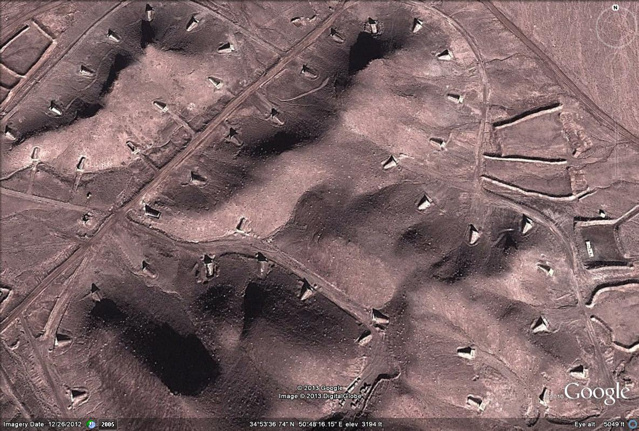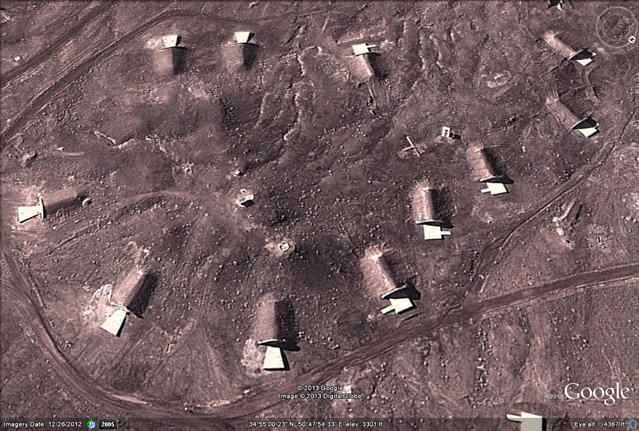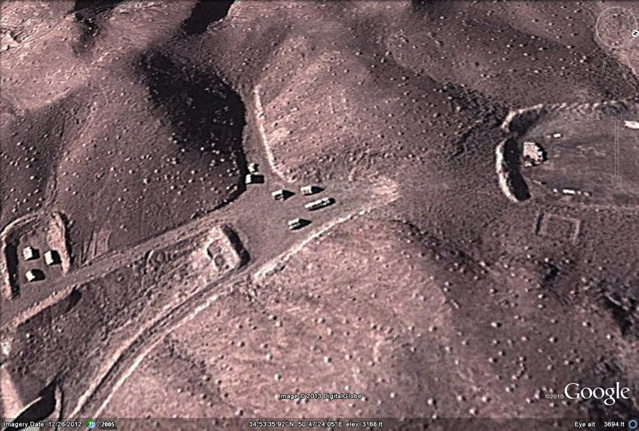Editor’s Note – Reza Kahlili tells us the line has already been crossed, so what were Obama and Netanyahu discussing, and is their an actual air gap between the two in the definition of the ‘Red Line’?
What ‘Red Line’? When Netanyahu and Obama spoke together in front of the press yesterday, the ‘Red Line’ was a key aspect. Of course, they tried to say there was no gap between our two countries regarding the nuclear ‘Red Line’ Iran is approaching, but we all know that was “Diplo-speak”.
But some analysts point out that though they sounded in unison on the issues, they were in fact referring to different definitions of what the red line actually meant in terms of the progress Iran has made.

Obama and Netanyahu in their joint presser on Wednesday, March 20, 2013 addressing questions about the “red Line” and much more…
Now we find out that all of that chatter was hitting home since Ayatollah Khamanei saw it for what it really was, and without saying, both Israel and the USA know that Iran had already crossed it as Assad did in Syria over the use of WMD in that war. At some point, the use of the term will lack any credibility, especially after reading what Reza Kahlili tells us is the truth – Iran is already way past that line and now it appears its go time for Israel.
In fact, Khamanei has renewed his threats:
Iran’s most powerful authority said the Islamic Republic would destroy the Israeli cities of Tel Aviv and Haifa if Israel launched a military attack against it.
“At times the officials of the Zionist regime (Israel) threaten to launch a military invasion but they themselves know that if they make the slightest mistake the Islamic Republic will raze Tel Aviv and Haifa to the ground,” Ayatollah Ali Khamenei said during an address, broadcast live on state television.
In fact, his people tweeted the following on his behalf:
(Read more here.) And then followed up with this one:
_______________________
REVEALED! EVIDENCE IRAN CROSSED NUCLEAR ‘RED LINE’
Source reveals details about enriched uranium, plutonium stockpiles
By Reza Kahlili – at WND
Iranian scientists are working on nuclear warheads – and trying to perfect them – at an underground site unknown to the West, according to a high-ranking intelligence officer of the Islamic regime.
The officer, who has been assigned to the Ministry of Defense, not only provided the coordinates to this vast site but also details of its operation.
Reza Kahlili: Heavy traffic across Iran’s ‘red line’
The site, approximately 14 miles long and 7.5 miles wide, consists of two facilities built deep into a mountain along with a missile facility that is surrounded by barbed wire, 45 security towers and several security posts.
The new secret nuclear site, named Quds (Jerusalem), is almost 15 miles from another site, previously secret but exposed in 2009, the Fordow nuclear facility. The power to this site comes from the same source as Fordow – the Shahid Rajaei power plant – with high power towers surrounding the site.
Construction of the site started about the same time as Fordow, and in the second half of 2010 all industrial tests were completed. The site became 60 percent operational in 2011.
Gen. Ahmad Vahid Dastjerdi, who works in the supreme leader’s office to protect the regime’s information and counterintelligence, manages the site. His deputy, Hojatolislam Ramezani, was appointed to the protection of intelligence at the Defense Ministry after several leaks about the country’s nuclear operations.
Quds, built about 375 feet under the mountain and accessible by two large entrances reinforced with concrete, has 12 emergency exit tunnels and spreads around the mountain.
The site has a capacity of 8,000 centrifuges and currently has three operational chambers with 19 cascades of 170 to 174 centrifuges enriching uranium. As of three months ago, the source said, there were 76 kilograms of 20 percent enriched uranium stock at the site and 48 kilograms of over 40 percent enriched uranium.
Though the regime has long succeeded in enriching uranium to 20 percent, which is 80 percent of the way to weapons grade, enriching to over 20 percent would be a clear sign of an intention of building a nuclear bomb.
One chamber is specifically allocated to laser enrichment research and development, and Iranian scientists have seen great progress, the source said.
Moreover, the source said, successfully making a neutron reflector indicates the final stages for a nuclear weapons design that would be a two-stage, more sophisticated and much more powerful nuclear bomb.
Regime scientists are also working on a plutonium bomb as a second path to becoming nuclear-armed, the source said, and they have at this site 24 kilograms of plutonium, which is sufficient for several atomic bombs.
The scientists are at the last stage of putting together a bomb warhead, he said, and the scientists in their design for a plutonium bomb are using polonium and beryllium, which would serve as the trigger for the bomb.
Iranian scientists, aided by North Koreans, are also working on new ways to have more miniaturized and more powerful atomic bombs, he said.
Adjacent to the Quds facility is another facility dubbed “Martyr Mughniyah” after the Lebanese terrorist Imad Mughniyah, the source said. Personnel at this site work on missiles and warheads.
The regime is building its Shahab 3 ballistic missiles there using compressed composite carbon material, which originated at an American company, he said. The company manufactures advanced composite materials and structural parts. Iran purchased the carbon material through an intermediary in Turkey, the source said. The material makes it possible to have a longer missile range with larger warheads.
The regime is working on 17 Shahab 3 missiles in preparation of arming them with nuclear warheads, the source said. The operational and technical aspect of the delivery system is 80 percent completed, he said:
“The regime, aided by North Korea, is also working on neutron warheads that could be used as super EMP weapons for electromagnetic pulse attacks.”
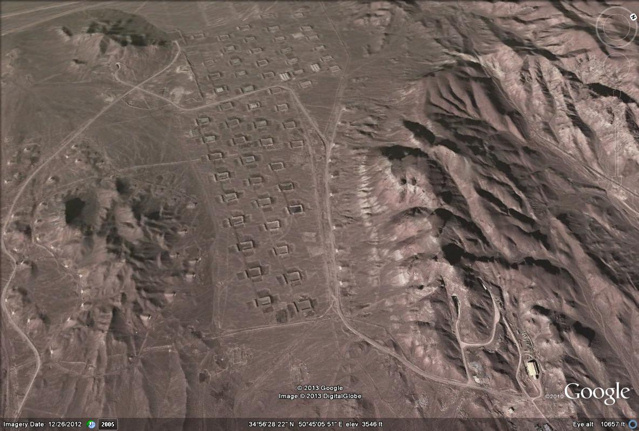
GoogleEarth 12-2012 image, The road connecting both Quds nuclear facility to Imad Mughniyah missile and warhead facility
Overhead images clearly show this site has over 380 missile depots and launching pads, facilities that can house large ballistic missiles, most likely Shahab 3 and possibly North Korean Taepodong II (ICBMs). The source added that this missile site is the center of the regime’s defensive and offensive strategies and supports other missile sites: the Imam Ali near the city of Khoram Abad in the Lorestan province and the one in Tabriz in the province of East Azerbaijan – to be used in any attack on Israeli and U.S. military bases in the Middle East.
This facility provides the missiles for Hezbollah, the source said, and, with the help of North Koreans, is mass producing a new generation of napalm bombs to be shipped to the terrorist group while at the same time working on white phosphorus bombs to be used for terrorist acts.
The images also show a military airfield for the sole use of officers at this facility.
The source noted that for this calendar year, Ayatollah Ali Khamenei has allocated $22 billion toward the country’s nuclear bomb and missile programs, funded by entities under the control of the supreme leader.
Dr. Peter Vincent Pry, executive director of the Task Force on National and Homeland Security, an expert on nuclear strategy and weapons who served on several strategic congressional commissions and in the CIA, reviewed the imagery and human intelligence (HUMINT) and called for a congressional hearing.
“The newly discovered underground complex looks like the kind of enormous complexes built by the U.S.S.R. during the Cold War and by Russia today,” Pry said. “Heavily hardened and fortified and supplied with huge amounts of electric power, by what appear to be 765-kilovolt electric power lines, the imagery suggests a top-priority military site. Nuclear-weapons programs consume vast amounts of electricity.”
The location of the site amid an Iranian missile armory, protected by a vast array of defensive and offensive missiles, is consistent with the HUMINT reporting that the site is for the final stages of nuclear weapons development, he said, and that the complex appears to be the most heavily protected site in Iran.
“The HUMNINT reporting claims the complex is for both the final stages of uranium enrichment – indeed, that Iran has crossed the ‘red line’ and is converting uranium hexafluoride gas into weapons-grade metal – and for actual bomb fabrication,” Pry said. “And the source gets sophisticated engineering details of nuclear weapons design right, even though the source is allegedly a non-expert.
“The source claims Iran now has all the materials for building nuclear weapons, such as weapons-grade uranium, plutonium as well as polonium and beryllium,” he said. “One can infer from the descriptions some design characteristics of parts for making implosion plutonium weapons and two-stage atomic weapons. The latter is a design far more sophisticated than the Hiroshima bomb that could have a much higher yield and possibly produce an explosion 50 times greater than Hiroshima,” according to Dr. Pry.
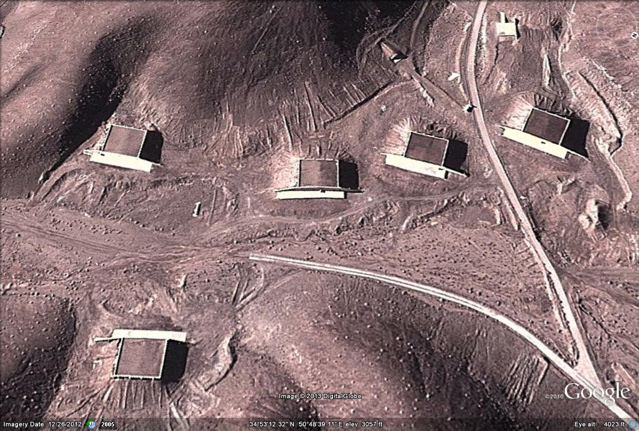
GoogleEarth 12-2012 image, missile silos, the size suggests large ballistic missiles such as Shahab 3 or the North Korean Taepodong II (ICBMs)
Fritz Ermarth, who served in the CIA and as chairman of the National Intelligence Council, reviewed the imagery. “There is much work to be done by imagery analysts on the photos Reza (Kahlili) has produced,” he said. “For example, is spoil from the tunneling visible? Does it tell us how extensive the tunneling is? But taken as a package, this imagery strongly suggests that Iran is working on what we used to call an ‘objective force.’ That is the objective of a deployed force of nuclear weapons on mobile missiles, normally based in deep underground sites for survivability against even nuclear attack, capable of rapid deployment. … They do suggest that Iran is working the problem of becoming a nuclear weapons power in a serious way, not just playing around for a few nukes on the shelf.”
Ambassador Henry Cooper, the former director of the Strategic Defense Initiative and chief negotiator on nuclear and space treaties with the Soviet Union, said, “Iran’s apparent interest and investments in underground systems are clearly coupled with its programs to develop and potentially employ weapons of mass destruction in the face of armaments that may be deployed against them, whether by Israel (‘the little Satan’) or the United States (‘the Great Satan’). Most notable is the fact that Iran has already demonstrated its ability to launch satellites into low earth orbit. When they also gain confidence in their nuclear weapons, they can then use those launchers to place nuclear weapons in earth orbit and detonate them over wherever they wish, creating an electromagnetic pulse (EMP) that could level its strategic playing field with all of Western civilization. This is perhaps their ultimate asymmetric weapon. Far-fetched? I wouldn’t bet (against) it.”
In an annual report to Congress Tuesday, U.S. National Intelligence Director James Clapper stated that Iran could not produce weapons-grade uranium without being detected. President Obama, in an interview last week with Israel’s channel 2 TV, said Iran is still “over a year or so” away from building a nuclear weapon.
However, the International Atomic Energy Agency in its Feb, 21 report stated that the Islamic regime has yet to provide access to several suspected sites, including its Parchin military facility, which is suspected of carrying out tests on nuclear bomb components.

